Our daughter Ann graduated from the University of Wisconsin-Eau Claire in December 2009 with a history degree and a teaching certificate. This was the culmination of a quest that began when she was in first grade. Ann came home one day and announced that like her beloved instructor Ms. Martinez, she wanted to be a teacher "when I grow up."
Always goal-oriented and determined, she was able to land an entry-level job with VISTA despite the wretched economy. It wasn't a teaching position but she would be in the field of education. She was due to report to Salt Lake City for her new job in April 2010. Ann needed to get her car out west, so I agreed to drive with her and take a flight back home to Brookfield, Wisconsin. It would be Ann's longest overland journey and the longest for me since the early seventies when I hitchhiked to LA and back with a fellow college student we called Mad Vet.
The weeks leading up to the trip included time spent looking for a copy of the Mormon Bible on CD. It seemed obvious this would be appropriate time-passing material for our 1,500-mile trek across one-third of the nation. I also brought along several other books on CD, and Ann had an iPod full of music.
Ann and her mom, Pam, explored various options for moving her stuff to Utah and finally settled on a ReloCube—a shipping pod—offered by ABF U-Pack Moving. We drove to Eau Claire and loaded most of her property into the container on April Fool's Day. I secured the load the best I could using all the bungee cords and straps we've accumulated over the years, closed the doors, and installed two padlocks.
On the Saturday before our departure, we washed and waxed Ann's silver, 2005 Hyundai Accent, thoroughly cleaned the interior, and applied Rain X to all exterior windows. We loaded her computer and a few other items we thought were too fragile to make the journey in the pod and went to bed.
The next morning we were rolling down the court at a little after 7:00. I alerted Ann when the trip odometer reached the first tenth mile of a long journey. It was Easter and we passed a house with two "He is Risen" signs in the front yard.
Soon we were on I-43, a route we had taken many times to visit relatives in Janesville, so everything was familiar. Only when we reached Interstate 39 north of Beloit did we encounter territory I hadn't seen in years. This stretch originally was called I-90 but was renamed for reasons unknown to me. When the Interstate reached Janesville in the early sixties, my dad loaded us into the Chevy to go have a look at the area's first cloverleaf interchange. It was a big deal.
Passing Rockford, Illinois, I told Ann this was the home of Channel 13, WREX-TV, one of two stations my family received when I was growing up in Janesville. Channel 13 was on the very high frequency dial and our roof-mounted antenna pulled it in along with Channel 3 from Madison, Wisconsin. Station numbers above 13 were ultra high frequency. The Philco set my parents purchased in the early fifties was VHF only. In superstitious America, it's surprising any station would settle for a number many regard as a bringer of bad luck.
Most memorable about Channel 13, for me at least, was weathercaster Rollie Sponberg. He appealed to kids not because of what he said about temperatures, storms, and so on, but because he also was a magician who packed a black top hat and a wand. A wave, a few magic words, and a rabbit or something would pop out of the hat.
Joseph Smith, the Mormon founder and prophet, who inescapably is a part of any story involving SLC, had a few tricks up his sleeve, too, and also employed a top hat.
We turned onto I-88 about 40 miles south of Rockford and began heading due west. I glanced at the gas gauge and noticed the needle was tending toward the reserve zone. No gas stations were in sight and the road seemed far more desolate than what we left in Wisconsin, where there are interchanges aplenty and food and gas places at nearly every one.
Thoughts of running out of gas on the first leg of our trip eased when a toll booth appeared. Either there is gas here I thought or the person taking our money will know how far ahead we need to travel to find a station. Sure enough, after giving her $2.00, the attendant said a gas station was at the next exit, two miles down the road. Illinois is a hugely developed state, at least in the vicinity of Chicago, but nearly everywhere else it is surprisingly rural. In some ways it feels more rural than Wisconsin.
Just before the Quad Cities of East Moline, Moline, and Rock Island, Illinois and Davenport, Iowa, we exited onto I-80, the road we would take the rest of the way to SLC, and crossed the Mississippi into Iowa. We would traverse the entire Hawkeye state before reaching Omaha, our destination for the day just over the Nebraska border. The terrain was flat and covered by farm fields, still barren in the early weeks of spring.
Smith's Story
I asked Ann if she was ready to listen to the Book of Mormon—21 CDs worth—narrated by Rex Campbell, and soon we began hearing the tale Joseph Smith authored back in the early 1830s. It begins with the Angel Moroni appearing in his bedroom, a figure he describes as aglow in whiteness and floating slightly above the floor. It wasn't new to me because years earlier I had read 80 pages of the Mormon bible after finding it in the nightstand drawer next to the Gideon's at a hotel in Hawaii.
It is an impressive work and though Smith's contention that he translated it from gold plates he received from an angel isn't credible, the intellectual power the book displays is substantial.
During
off
time
on
our
journey
I
used
my
iPhone
to
read
Web
site
entries
about
Smith
and
was
astonished
to
learn
that
he
didn't
write
his
bible
in
the
manner
of
the
times
by
putting
pen,
pencil,
or
quill
to
paper. He dictated it.
Necromancer
Before he became a prophet, Smith was a treasure hunter and a necromancer—an individual who communicates with the dead. Necromancy is a "black art," according to dictionary.com, something practiced by sorcerers and witches.
As
part
of
his
pre-prophet
trade,
Smith
employed
magic
rocks
called
seer
stones
to
help
him
find
buried
valuables. The
seer
stones
along
with
special
glasses
cached
with
the
golden
plates
facilitated translating their markings, according to an entry at the
Signature
Books Library:
Other eyewitnesses of the translation process say Smith sometimes placed a blanket between himself and his scribes, which might have permitted him to read material from notes and books.
In any case, he reeled off an epic tale of ancient Israel and Jerusalem, peoples banished to the wilderness, intrigue, battles waged, etc. It's King James biblical in sweep, tone, and delusions of grandeur.
Among various surprises, it claims that 2,600 years ago Israelites3 made their way to what we ethnocentrically call North America. This is from the introduction:3
"The book was written by many ancient prophets by the spirit of prophecy and revelation. Their words, written on gold plates, were quoted and abridged by a prophet-historian named Mormon. The record gives an account of two great civilizations. One came from Jerusalem in 600 B.C., and afterward separated into two nations, known as the Nephites and the Lamanites. The other came much earlier when the Lord confounded the tongues at the Tower of Babel. This group is known as the Jaredites."4
According to the Online Etymology Dictionary, the name "Mormon" was coined by Smith and means "more good." The Encyclopedia of Mormonism (EOM) summarizes how the story turns out:
"The concluding chapters of the Book of Mormon describe a calamitous war. About A.D. 231, old enmities reemerged and two hostile populations formed, eventually resulting in the annihilation of the Nephites. The Lamanites from whom many present-day Native Americans descend, remained to inhabit the American continent. Peoples of other extractions also migrated there."5
However, as with most religions, there is a lot of caginess. Even the EOM--largely produced by Brigham Young University professors, all ultimately employed by the Church of Jesus Christ of Latter-Day Saints--isn't the last word, according to a caution in its preface:
"Lest the role of the Encyclopedia be given more weight than it deserves, the editors make it clear that those who have written and edited have only tried to explain their understanding of Church history, doctrines, and procedures; their statement and opinions remain their own. The Encyclopedia of Mormonism is a joint product of Brigham Young University and Macmillan Publishing Company, and its contents do not necessarily represent the official position of The Church of Jesus Christ of Latter-Day Saints."6
"...Joseph was chopping wood behind his home when his friends brought a new convert, whom they introduced as Brigham Young. A Vermonter by birth, like the prophet, he had caught the same restless contagion that drove the Smith family west. He was older than Joseph and shorter, but stocky and powerful, with hands that were made to work with tools. There was a hard strength in this man that Joseph must immediately have sensed, for Young radiated an air of robust vitality. They spent the rest of the day together and at night went to a cottage meeting. There Joseph asked him to pray. He responded surprisingly with an exhibition of the 'gift of tongues,' one of the phenomena that Joseph had been gently trying to suppress. Perhaps he fell into this idiom, which was so foreign to his hard-headed nature, in his anxiety to impress the prophet." 7
After about 100 miles of the Book of Mormon, Ann said emphatically, "If he says, 'And it came to pass' one more time!"
Jon Krakauer in Under The Banner of Heaven writes that the Book of Mormon contains 2,000 expressions of "it came to pass" and attributes the count to Mark Twain, who picked up a copy during a visit to SLC and called it "chloroform in print."9 In Roughing It, published in 1872, Twain wrote:
Critics
think
Smith
read
other
works
before
he
concocted
the
Mormon
bible
and
either
was
influenced
by
their
ideas
or
copied
them
outright.
Grant H. Palmer wrote a detailed analysis of the sources Smith used to create his stories and doctrines titled An Insider's View of Mormon Origins. In the book's preface, Palmer mentions he had a 34-year career primarily as "an Institute director for the Church Education System of the Church of Jesus Christ of Latter-Day Saints."
Palmer finds many parallels between the Book of Mormon and the bible
and other works Smith probably had access to, including View of the Hebrews (or the Tribes of
Israel in America) by Ethan Smith, published in 1825, and a
short story titled The Golden Pot
by German writer E.T.A Hoffman which was translated into English by
Thomas Carlisle in 1827:
"...much of the Book of
Mormon
reflects the intellectual and cultural environment
of Joseph's own time and place. We find strands of American antiquities
and folklore, the King James Bible, and evangelical Protestantism
woven into the fabric of the doctrines and setting."11
I haven't
encountered
much
about Smith's intelligence but suspect he had a high IQ, maybe genius
level. A
Web
site
sponsored
by
the
Church
of
Jesus
Christ
of
Latter-Day
Saints
titled
"Plain
and
Precious
Truths
Restored,"
By Clyde J.
Williams, Associate Professor of Ancient Scripture,
Brigham Young University, mentions Smith's intelligence
but only to minimize its importance:
"After
an intense study of all the doctrines the Book of Mormon reveals
which are not found in the Bible, Elder B. H. Roberts concluded:
'Beyond
controversy neither the native intelligence nor
learning of Joseph Smith can possibly be regarded as equal to
such a performance as bringing forth the knowledge which the Book
of
Mormon imparts
upon these profound subjects; nor can
the intelligence or learning of those who assisted him
in translating
the
book
be regarded as sufficient for such a task. Nor was the
intelligence and learning of any one to whom the origin of the
book
has ever been ascribed equal to such an achievement.
"Indeed the book sounds depths on these subjects not only beyond
the
intelligence and learning of this small group of
men referred to, but beyond the intelligence
and learning of the
age itself in which it came forth.' The
more carefully one studies
the doctrines and teachings of the Book of Mormon, the more
powerful the
evidence becomes that Joseph Smith was not reflecting
the learning of his time or his own personal study. He was the
instrument
God used to reveal many lost truths and once
again 'make
plain
the
old paths' that, if followed, will lead one to exaltation
and eternal life."12
Over
the
years,
I've
seen
arguments
like
this
many
times.
It
always
boils down to mere humans
could not have done x or y. Erich von Daniken reaches for this
rationale over
and over in his completely debunked Chariots of the
Gods. The Easter Island Moai and the
Nazca
Lines of Peru are examples.
But, humans have done astonishing things and certainly things way more challenging than creating the entirely speculative, make-believe world of the Book of Mormon. Landing on the Moon and eradicating diseases such as smallpox are prominent examples. And there are great writers who demonstrated amazing depths of knowledge, creativity, and insight, Dickens, Poe, Steinbeck, and many others. Newton's invention of calculus, Darwin's (a contemporary of Smith's) discovery of evolution, Max Planck, Erwin Schrödinger and quantum mechanics, Einstein's relativity.
It's a tragedy that Smith's intellect wasn't put to a noble purpose instead of one mired in mythology and dependent upon gullibility and egotism.
Raging Libido
Oddly (although Einstein reputedly also was sexually adventurous13), Smith's intellectual power was equaled or surpassed by his raging libido. He was the Sexy Sadie of his era, as Krakauer reports:
"Between 1840 and 1844, God instructed the prophet to marry some forty women. Most were shocked and revolted when Joseph revealed what the Lord had in mind for them. Several were pubescent girls, such as fourteen-year-old Helen Mar Kimball. Although she acquiesced when the prophet explained that God had commanded her to become his plural wife--and that she would be permitted twenty-four hours to comply--Helen later confided to a friend, 'I was young, and they deceived me, by saying the salvation of our whole family depended upon it.'"14
Like
so
many
charismatic
spiritual
leaders,
before
and
since
(Americans
Jim
Jones,
Jim
Baker,
Jimmy
Swaggert,
and
David
Koresh
come
to
mind
immediately),
Smith
was
quick
to
use
god
to
help
him
achieve
secular
even
carnal
purposes. Many of the women he
seduced were girls such as Miss Kimball. One, a 15-year-old named
Miranda Johnson,
almost put
a stop to his carousing. After he
"bedded" the teenager in Kirkland, Ohio, while a guest in her
family's home, locals caught wind of it and a group 50 strong reacted
violently
according to an account by the lass' older brother Luke.
Krakauer reports the townsfolk:
Instead Smith was
severely beaten, tarred and feathered, and left in the woods. A
strange
and
humiliating
event
in
the
history
of
a
religion
that
now
claims
13
million
members
worldwide16 and
reveres
Smith
as
a
prophet
who,
in
addition
to
his
interactions
with
the
Angel Moroni, met with Jesus and
god.
We reached Omaha at about 4:00 p.m. and were now 500 miles from home. The Super 8 we checked into just off the Interstate was clean, modern, and plain. The area was typical urban sprawl ("Generica" artist friend Tom Redman tells me this is called) with strip malls side by side and chain stores up and down the long, arterial blocks. It could have been somewhere in Wisconsin or Hawaii or Florida.
We're not religious so it hadn't occurred to us that we were traveling on Easter Sunday until the last minute. It meant little until I discovered that the better restaurants in the city were closed. I had hoped to visit an Omaha steakhouse.
Instead we went to an "all-you-can-eat" Italian buffet. Many of the patrons were on the portly side, and they tended to take advantage of the endless supply of tasty but unremarkable food.
Next morning we were up early and on our way for the second 500-mile leg of our trip. Nebraska rolled by and we began seeing the first major change in terrain and scenery since leaving Wisconsin.
New Vistas
Mesas and buttes appeared in the distance and the emty, furrowed corn fields and mixed forests we drove past earlier were replaced by scraggly vegetation and scrawny conifers. The lush foliage we were accustomed to was gone, but the horizon grew more visible in all directions. Though not Montana, we were in big sky country with sweeping vistas all around. Sometimes north of the highway we saw whole trains, locomotive to caboose, in one field of view.
Just over half way across the state we entered the Mountain Time Zone. It was unmarked but showed up on our iPhones, which changed automatically. We stopped at a rest area where a sign near the parking lot warned dudes like us that we were in rattlesnake country, partner.
Cheyenne
By 3:00 p.m., we reached Cheyenne, Wyoming, and the weather was perfect. Sunny and warm. We checked into the aptly named Historic Plains Hotel in the downtown area. Built in 1911, the place underwent a restoration in 200317 and has many attractions, including a large stained-glass skylight near the front desk lobby. Paintings of the old west line the walls.
With a population just under 60,000, Cheyenne is a small city so the downtown streets are easy to walk in a few hours.18 It's clean, thoroughly Western, and has always epitomized the West for me, probably because of the fifties television program Cheyenne, starring Clint Walker. We never missed it.
Wyoming and Montana and to a lesser extent the
Dakotas are quintessential cowboy
states. California, Utah, New
Mexico, Arizona, and Texas are Western but they don't have the same
cowboy feel
as Wyoming and Montana, to me at least.
Cheyenne lives up to its name and Ann and I soon wandered into a store that sold everything a tourist might need to become a buckaroo, from cowboy boots and bandanas to bola ties and tight-fitting, tapered shirts with pearl buttons and fronts embroidered with vines and flowers.
One touristy place we entered called The Emporium
had merchandise stacked from floor to ceiling. A
huge
selection
of
items
lined
the
walls,
aisles,
and
every
nook
and
cranny. A nice blond
lady was at the counter and while Ann looked around I asked if she
could
recommend a place for dinner. She
kindly and incisively provided a rundown of every place within walking
distance. Impressed, I bought a
bunch of things from her to take back home.
When we returned to the hotel, I called Lamar Jackson at the municipality of Salt Lake City to check into the parking permit we were told would be necessary to have the pod delivered to Ann's apartment.
I said we were in Cheyenne and expected to arrive in SLC on Tuesday afternoon. He immediately asked how the weather was. I told him beautiful. Warm and sunny. He said a winter storm warning had been issued for the mountainous area between Cheyenne and SLC, the final leg of our journey and a distance of about 370 miles.
Looking out on the beautiful afternoon we were experiencing in spring clothes and sandals, it didn't seem possible. It was April 5, two weeks after equinox. On the other hand, I've seen snow in Northern Wisconsin in early May. And once, during a family vacation to Yellowstone, we drove through a light snowfall on the way to Jackson Hole, Wyoming, in July.
I
called
the
hotel
in
SLC
and
mentioned
what
Jackson
said
about
the
snowstorm. The desk clerk replied,
"That's supposed to be north of the Interstate." Good,
I
thought,
but
told
her
if
I
was
unable
to
arrive
as
planned
on
Tuesday,
I
would
call
from
the
road.
The hotel didn't have a parking lot or ramp so we had to leave the Hyundai on the street down the block from the lobby. Far from ideal, because it was packed with Ann's stuff. I slept poorly as a result and the first thing I did when I got up was check the car. I was relieved to find it intact, but I also found snow falling lightly at 4:30 a.m. Afterward, I sat in the empty lobby reading with no sound other than the night auditor posting the day's receipts.
Coffee wasn't available and there weren't any cafes nearby. After a while, I noticed the auditor walk to the closed coffee shop located in front of the hotel. I didn't think much of it until two airline pilots got off the elevator, pulling carry-ons. They headed for the coffee shop and emerged holding steaming Styrofoam cups.
When the auditor reappeared, I asked if I could get a cup of coffee, too. She hesitated and said, "Well, it's special for the pilots and I won't be able to charge you for it." Naturally that didn't bother me. "Frankly," I told her, "I need a coffee fix; are there any other shops in the area?" At this she invited me into the closed shop and poured a large cup, proving again it never hurts to ask.
I returned to the room about ten minutes later, and Ann was up and raring to go. It was still dark when we drove out of Cheyenne, and the snow was coming down. At first, it didn't make driving hazardous. Certainly I had seen far heavier snowfalls and worse storms in Wisconsin. However, as we got into the foothills west of Cheyenne, the winds picked up—extremely strong winds blowing to the north. They lifted snow from earlier falls and blew it across the highway, causing white-out conditions in many places. This coupled with the unfamiliar territory, mountainous terrain with steep drops off the sides of the road, and truckers whose headlights would appear deep in the rear view mirror, approach, and finally roar by at foolhardy speeds, made driving challenging.
As we drove along, we listened to the book on CD Krakatoa by Simon Winchester about the massive 19th century volcanic explosion in the South Pacific.
After 85 miles, I needed to use the bathroom and get another cup of coffee, so we exited at Elk Mountain and pulled into a gas station not far from the Interstate. It was a modest business with just a few pumps and a small store. Ann went inside while I filled the car, snow falling on my exposed feet because I was still wearing sandals.
When I went in to pay, there was a young woman behind the counter and a grizzled local sitting on an old wooden chair near the door. As soon as I entered he said, "Fine shoes for Wyoming!" and laughed. I said, "We're from Wisconsin, this is sandal weather for us." He didn't laugh.
I asked him how far the mountains went, and he replied simply, "Salt Lake City," and laughed again. We still had almost 285 miles to go and I had hoped we'd make SLC by early afternoon.
Worsening Conditions
Back in the car, we headed off, rolling up and down the hills and carefully making our way along the curving road. Whenever semis roared by, I'd hug the shoulder and hang on. It amazed me that the drivers were traveling at the speeds they were given the conditions.
High-anxiety circumstances such as the ones that morning are the only things that still make me want to have a cigarette. On the SLC trip, I had been off smokes for more than six years but suddenly I needed a pack.
The storm worsened and finally, somewhere near Wamsutter, traffic came to a complete standstill. After sitting for five minutes, I turned off the car. There was no fear of freezing because the temperature was in the high 20s. We had plenty of gas and ahead and behind us were all kinds of semis and other vehicles, most with their engines idling.
As we sat talking, a GMC Suburban went tearing by
in the median. No, it wasn't a law enforcement vehicle; just some
nutcake.
After a while, the coffee I had purchased in Buford became a problem. I turned around in the seat, pulled my suitcase from the pile in the cargo area and dug out my tennis shoes, a pair of socks, and a coat, explaining to Ann that I was going to see if I could use the area behind the cab of the semi truck in back of us as a latrine.
Eventually I got everything on and went to talk to the driver. First I asked if he had any idea what the holdup was and he said he had heard on the CB that it was an accident several miles west of our position. He volunteered that this kind of weather was nothing new to him on I-80. "Happens all the time out here," he said. "You just gotta deal with it and not do anything crazy."
There was a woman about his age in the sleeper area of the truck's cab, but I popped the indelicate question. "No, go ahead," he said. "No problem."
Pretty soon Ann needed to make the same trip, and while she was gone, a woman got out of the car ahead of us and asked if she could join my "wife" at the makeshift bathroom. I corrected the wife part and said sure, but exactly then, drivers started their engines, and vehicles began moving again. The woman ran to her car just as Ann got back in. I turned the key and we were off. Although snow had accumulated on the pavement it was light enough that traction wasn't a problem even though we were on a slight grade. But we barely were going five miles per hour at first.
Ann and I immediately agreed that we would get off the Interstate at the next town with motels and spend the night. We'd had it. She pulled out her iPhone and amazingly got online immediately. Using the GPS feature, she quickly determined our location on I-80 and that the next city was Rock Springs, about 50 miles ahead.
The Super 8 in Omaha wasn't bad, so when she saw one in Rock Springs she dialed the number. A room was available and she reserved it with my Visa card. Now it was just a matter of getting there.
We crawled along for the next two and a half hours,
rarely traveling more than 20 miles per hour. But
we
were
rolling
again
and
happy. Here
and there we saw semis and
other vehicles in the ditches or median. These were
driven by people who probably were going faster than 20 miles per
hour.
Eventually signs announcing the Rock Springs exit appeared. It was 3:30 p.m. and we had traveled 230 miles in ten hours over an Interstate that we later learned had been shut down behind us by the Wyoming Department of Transportation (WYDOT). This happens so often gates are positioned at the entrances to on ramps so the road can be closed quickly.
The closer we got to Rock Springs the more vehicles we saw stuck in the snow off the road. All sizes and shapes but mainly semis. Must be embarrassing for a professional driver to report back to the company that he or she is going to be delayed...
As we neared our exit, traffic again came to a halt. Great I thought, we're going to be stuck on the Interstate five miles from our hotel. However, the line soon began moving again and we got off at US-30 Business.
Ann was starving so we went to a Wendy's before we looked for the hotel. It had been a long drive and we hadn't had much to eat.
After the late lunch, we found the Super 8 and
checked in. When we got to the
room, Ann immediately noticed that there was something wrong with the
window,
snow was piling up on the ledge inside the
room, and it was easy to feel the cold wind blowing through the void. I went to the desk and the clerk gave
us a different room. She wasn't friendly
and given the demand, I distinctly felt that she was thinking we should
be
happy with any kind of room
considering the conditions. Beggars can't
be choosers.
The new room was fine, and while Ann took a shower, I went down to the lobby and checked road conditions on a guest PC. All reports were bad and predictions for later that day and the next weren't any better.
The Weather Channel was on a TV suspended from the ceiling in one corner, and a group of waylaid travelers were watching reports that coincided exactly with what was coming across the computer.
Adversity makes conversation easier, and soon I was talking with various people as they peered past me at the PC screen or made comments about weather channel reports.
Knights
of
the
Road
One opinion heard over and over was that during
the storm, many truckers were driving as if the pavement was dry and
visibility
as deep as the Wyoming sky. I come
from a family of truck drivers and hate to appear negative but have to
say that
the long-ago Knights of the Road image has sadly
vanished.
The
change began in the early 70s when gas prices tripled and then
quadrupled,
cutting into trucker pay. In
the
years
that
followed,
it
seems to me, many truck
drivers became more aggressive and less cautions. Certainly
that
reality
was
all
around
us
on
the
Interstate
west
of
Cheyenne.
I left the computer, took a seat with my iPhone in the central area of the lobby, continued reading about the Mormons, and observed people streaming in. They inquired anxiously, "Do you have a room?" and for quite a while the clerk answered affirmatively but eventually every one was taken.
Others were sitting in the lobby and pretty soon we were exchanging war stories about what we had experienced on I-80. One stranded motorist, an Independent truck driver from Wisconsin, was taking a load of hops from Oregon in a panel van to a Coors Brewery in Colorado, an assignment he had received from Miller-Coors in Milwaukee.
Wednesday morning, I was up early as usual but wasn't the first in the lobby. Others were already watching the weather channel and trying to determine if I-80 was passable. The sky was gray but the snowstorm had stopped.
No one was at the computer so I went to the WYDOT site and looked for Interstate conditions. At 5:00 a.m., it was still showing I-80 closed most of the way across Wyoming.
Soon, however, I noticed a change. I-80 opened from Rock Springs to Evanston, Wyoming, a distance of about 100 miles. After that, it was closed going into Utah.
A woman from Wyoming who was also stuck in Rock Springs told me that she thought it was still closed after Evanston because of a rugged, mountainous area near the western edge of the state known as the Three Sisters. I-80 through it was a series of curving inclines and declines that she said could be especially slippery and dangerous.
Ann was up and ready to go by 5:30, and I updated her on the situation. Probably things would be open beyond Evanston later in the day, but who knew when? At worst, though, we'd have to spend a night in Evanston so we might as well get rolling and see what the road looks like. She agreed and we were off.
Pulling out of Rock Springs we saw semis not only filling parking lots but also parked along the roads. I-80 was a different highway from the day before. The pavement was dry and there was no evidence other than an occasional truck or car stuck in the snow off the road that 14 hours earlier this highway was shut down.
Oddly, we were
virtually alone on the Interstate all the way to Evanston.
No traffic was coming from the west, and
only rarely did a vehicle pass us from behind.
Wyoming is a pretty state and without traffic and clear and sunny conditions, we were able to see for miles across expanses and up and down mountain peaks to both sides, ahead, and behind. Long rows of windmills stood front to back along ridges; others were clustered in wide open areas.
As we approached Evanston, traffic coming our way
picked up. At the exit, we noticed
that I-80 heading east was blocked by law enforcement personnel who
were
checking every vehicle before allowing it to proceed.
The road was clear at least
to Rock Springs, but we thought that to the east of where we spent the
night it
was probably still snowed in.
Evanston
Parked vehicles clogged the arterials and parking lots of Evanston--more semis than I have ever seen in one place. The filling station we entered was crowded except by the pumps. Few were arriving at this point; most had been there through the night and had already filled up.
Inside the store, the aisles were packed with motorists and truckers who noticed my arrival and asked where I came from. When I mentioned Rock Springs, several asked about conditions. East to Rock Springs was fine because we just traveled it I repeated a few times but from there to Cheyenne I had no idea other than recalling the horrendously windy, blowing snow conditions we had driven through the day before.
Soon we were on our way again. The Three Sisters danger zone the woman in Rock Springs warned about was a non-issue. In fact, I didn't notice it and only by doing some research after the fact was able to determine it is located just east of Evanston, which is the last major Wyoming community before Utah.
Reaching the border prompted an appreciative whoop from Ann, who was celebrating every milestone. It was great to see the Utah sign and know that this was the last leg. We were late but had built in an extra day in case of the unexpected.
Approaching Salt Lake City the highway began what is the longest unbroken descent I have ever experienced in a car. Fortunately the road was dry and the weather sunny, but it was unsettling to know that stopping on a grade this steep would be difficult.
I pulled into the far right lane and put the Hyundai in fourth gear to slow our speed down the mountain. In the eastbound lanes I saw cars climbing the long hill in the other direction and wondered what level of strain that would put on the Accent. I mentioned to Ann that probably the highway engineers had designed the grade so it was as gentle as possible but it still seemed impossibly steep to me.
When we were down in the basin occupied by SLC, the
mountains we had passed through formed a backdrop of snow-capped peaks. First and continuing impressions of the
city were clean, orderly, well laid out.
Downtown Salt Lake City
We made our way to Lamar Jackson's office in a modern building not far from I-80. Before plugging the meter, I noted the mileage: 1,475.3 miles from home to the heart of SLC.
Jackson was friendly and happy to see the mountain newbies from America's Dairyland. We sat down, and he began filling out the paperwork that would allow us to park the pod on the street in front of Ann's apartment. He asked about our trip through the storm and said he was concerned because of how unpredictable and nasty Wyoming weather can be. Some years earlier he had worked in Rock Springs and recalled that storms strong enough to close the Interstate were common.
As
he
was
finishing
the
permit,
he
asked,
"Will
the
pod
need
to
remain
on
the
street
overnight?" No, I
said. He replied that
was good because if it did we would have to put lighted, warning
sawhorses on
both ends. Cost for the permit was
$27.50.
Before we left, I
asked
him
what
it
was
like
to
live
in
a
city
that
was
predominantly
Mormon. He quickly said, "We
have all kinds of people here."
Back
outside,
the
crisp
air
felt
great
and
the
Sun
was
beating
down,
though
the
temperature
couldn't
have
been
much
over
60. Still it was a huge difference from
the
morning before when we drove out of Cheyenne in a snowstorm. Though it lies in a basin surrounded by
mountains, the elevation of SLC is 4,327 feet.19 The
first
time
I
experienced
altitude
like
this
was
in
Denver
on
a
trip
for
the
telephone
company
and
like
many
firsts,
the
unusual
feel
of
the
air
and
sun
at
higher
elevation
stuck
with
me.
Sugar House
With Ann navigating on the iPhone, we made out way to the place she would be living in an area east of downtown SLC called Sugar House, which was established in 1853 and named after a sugar beet test factory that once operated there.20 The small, white cottage-style home she had a room in reminded me of the bungalows lining the streets on Milwaukee's South Side. Her new roommate Heather greeted Ann when she knocked on the door.
Ann had found the room through Craig's List and rented it from afar. One of the women she would be working with checked it out for her.
Heather decided it needed painting before Ann moved in and had just gotten to it the day we arrived so the paint was still wet. She also arranged for a friend, Scott, to come over when the pod arrived and help move Ann's furniture in.
During the trip, I had been in regular contact with Chris who works for the ABF U-Pack Moving company in Salt Lake City and called him from the car while Ann talked with Heather. He said that although the company required a four-hour delivery window, he felt he could send the pod over right away. Great guy and helpful.
I was sitting on the curb in front of Ann's place waiting for the pod when Heather opened the door to let her pit bull puppy named Kava out. He saw me and at a full gallop launched himself into my lap as if we were old friends. Very affectionate, and a cute little bugger.
Moving In
Before long the pod arrived. When I removed the padlocks and opened the doors, things were pretty much as I had last seen them in Eau Claire a week earlier. Even Ann's full-length mirror—which she couldn't live without—was unbroken.
Heather's friend Scott arrived and helped me with the big items like the mattress and box spring. The only hitch was the armoire. The doors were taped shut and I remembered this was to keep them from swinging open during the trip. Scott tried to lift his end which was the top and said, "Are you sure there's nothing inside?" I said I was and he seemed dubious given the weight he felt. Nevertheless with a mighty heave he lifted his end and in we went. Only after we opened the doors did I see, to my embarrassment, that there were boxes inside the upper compartment. It's hard to get everything right in this nutty world. Scott was good-natured about it though.
After we got Ann's bed in place, I drove to the hardware store--which is something I seem to do every time I help Ann move--and bought bolts, nuts, and other things needed to complete setting up Ann's furniture. Stuff gets lost in a move or things need fixing. It's good to be a little handy. When I returned I met Ann's other roommate, Christina, an accomplished artist with paintings hanging on the walls of the house.
They invited me to dinner, but I thought it would be better for them get know one another.
Main Street
Ann dropped me at the hotel where I would be staying, America's Best Inns and Suites on Main Street, about a mile south of downtown and two miles south of Temple Square, which is the official center of the Mormon universe--on Earth at least.
The hotel was no frills but clean and neat. Ann had the car so I ventured out on foot to get a feel for the area and was struck by the number of auto dealers, including one selling Ferraris and Maseratis. Fittingly, I thought, I also saw a car repair garage named "Divinity Motors."
There were a number of taverns, too, but fairly muted in appearance. No big neon beer signs.
We had a large, afternoon lunch so I thought I'd get something to eat later, which turned out to be a mistake.
To the south I saw the unmistakable lights of a baseball stadium and guessed SLC had a minor league team. It was several long blocks away, but I thought it might be interesting to see a game in Mormon country and walked down the street. It was just six p.m., but most businesses were closed, there was no one on the street, and very little traffic.
As I neared the stadium I could tell a game wasn't underway because there was no activity near the entrance. The Lake City Fire Station is next to the field so I approached a fireman who was sweeping the walk. I asked whether he knew if there would be a game later, and he said no, that workers were just checking the lights in preparation for the upcoming season.
A sign announced the team is called the Salt Lake City Bees. Every name has a story. In this case, it begins with the word deseret, which, according to Smith's Book of Mormon, means "honeybee."21
When the Latter Day Saints, led by Young, arrived in Utah in 1847,22 the territory was still part of Mexico. With all the demagoging that goes on about illegals from Mexico, I wonder how many Americans realize just how much land the US grabbed from its weaker neighbor during the Mexican-American War that took place between 1846 and 1848. US spoils were parts of Mexico that became the states of Arizona, California, Nevada, New Mexico, Texas, and Utah—about a quarter of the continental US. Many Nationalist Fundamentalist types think we stole it fair and square, if they think about it all.
When I learned about Manifest Destiny in junior high school, it was presented as an inevitable, even noble enterprise, not one that basically took land from an established nation and neighbor. It was portrayed in a way similar to how the Nazis would have explained why they conquered the world, had they succeeded. Ironically Young and his followers arrived because they were fleeing the US, thinking they might receive better treatment from the Mexicans. Wherever Smith and Young had moved the Mormon flock in the US, the group and its leaders faced persecution by Christians.
Later when Young began angling for statehood, he favored deseret as the name for the Mormon state because of the industry of bees which he felt citizens should emulate.
Many things in Utah have names that include the word. Some examples: Deseret Manufacturing Company, the early LDS-church venture that operated the test plant Sugar House is named after; the Deseret News, a large LDS-church paper published in SLC; and Deseret Biologicals, of Sandy, Utah, a self-proclaimed "world leader in the delivery of homeopathic, herbal, mineral, enzyme therapies through medical professionals." The company's logo looks like an upside-down hornet's nest. A similar graphic appears on the Utah state flag.
"Post Dental Visit," one of the many products on the Deseret Biologicals' Web site, is for "...the temporary relief of symptoms related to the trauma associated with a dental procedure."24
I tried to discover—just for the heck of it—what a bottle of Post Dental Visit cost and downloaded the company's catalog, which lists the product and hundreds if not thousands more over its 155 pages, but no prices.
Paging through I was introduced to a variety of strange concoctions, including "Electrolyte Drinks," whose "indications," according to the catalog are "colitis, electrolyte depletion, exhaustion, fatigue, flu, gastroenteritis, gastrointestinal distress, kidney dysfunction, muscle cramps, muscle pain, muscle weakness, dehydration, sweat, vomiting."
A disclaimer on the
Deseret Biologicals' catalog's title page, however, seems to spoil the
party:
"No statements in this product catalog have been evaluated by the FDA.
The
products described herein are not intended to diagnose, treat, cure or
prevent
any disease." Undoubtedly it
was written by a cold-hearted attorney and is designed to cut lawsuits
off at the
pass
Etymology
The etymology of the word deseret, like many things associated with Mormonism, is the subject of much conjecture. Mormon scholar Kevin L. Barney25 quickly dismisses the possibility that it is simply a variant of the English word "desert" and then goes into a complex explanation of deseret's possible roots in ancient Egyptian.26
What it is more than anything, it seems to me, is another example of the brilliance and creativity of Smith. The odds that the word truly originated in Egypt are close to zero but somehow Smith thought this clear variation of desert had a nice ring to it. But why use it to describe honeybees? Only Smith knew.
I didn't know any of this when I walked north away from the home of the Salt Lake City Bees. By now it was time for dinner, so I began looking for a restaurant. My iPhone identified several in the area, but each was closed when I reached it. The streets were dead quiet so ultimately I got used to the idea of going to bed hungry. It's good now and then to feel exactly how the less fortunate feel regularly. Figured I'd get up early and have a big Utahan breakfast somewhere so it was easy to put the pangs out of my mind.
The next morning, I took a shower, packed, and hit the streets at about 5:30 looking for a place to eat. I stopped at a gas station, bought two newspapers—one the Deseret News, which I mistakenly thought was titled the Desert News—and asked the clerk for a recommendation. He suggested the restaurant in the Grand America Hotel, which was six or seven blocks away. Good choice. Excellent food and a friendly waitress.
On the way back to America's Best Inns and Suites, I could see trolley-like trains on streets in the distance. Later I learned these were part of the SLC light rail system called TRAX,27 which stands for Transit Express. Wish I could have taken a ride but the cars were never near me on Main Street.
Temple
Square
Ann and I had discussed doing two things before I left town. One was visiting the Temple Square area which is to Mormons what the Vatican is to Catholics. The second was driving out to the giant lake that gave the city its name.
It's easy to find Temple Square because of its namesake 19th century temple topped by a golden statue of the Angel Moroni, the supernatural figure that Smith said appeared in his room in the New York countryside and led him to the golden plates.
The temple is a beautifully designed and built 19th-century structure with six steeples (or spires). It's constructed from a granite-like stone named quartz monzonite28 and was dedicated in 1893.29
The Angel Moroni stands atop the steeple directly above the entrance. He faces east and is blowing a trumpet which symbolizes the time when the faithful will be alerted to the second coming of Christ.30 Moroni is 12.5 feet tall and positioned 210 feet above the pavement on a stone sphere.31
Oz
West
and
East
Behind the temple the famed Mormon Tabernacle is surprisingly modern considering it was erected just after the Civil War. It is oblong with a rounded roof that matches the curving ends. Evidently the unusual shape32 sprang from the mind of Young.
Ann and I walked into the Tabernacle and heard the massive organ that's situated against the far wall. Its towering brass pipes and general appearance reminded me of the Wizard of Oz. The organ was being played in a testing fashion but even then produced a wonderful sound. Add the voices of the 360-member33 Mormon Tabernacle Choir and the overall effect must be ethereal.
Walking around the perfectly manicured plaza I couldn't help but wonder what Smith would make of what he wrought.
The cleanliness and well-ordered appearance of the square where not a blade of grass seemed to be leaning the wrong way and there was no litter or disorder brought to mind a great line I heard when I visited the old AT&T office complex in Basking Ridge, New Jersey, in the early 1980s.
Pulling up to the place that first morning in my rental car, I saw a platoon of groundskeepers in brightly colored jumpsuits walking along the road and sidewalks on either side, each wielding a leaf blower to make sure no debris defaced the concrete. The building was also low, long, attractive, and modern. At the time, it was the second headquarters of AT&T, which was still a monopoly. The interior was a combination of birch-colored wood, royal purple walls, and antelope suede upholstery. Throughout the sprawling complex, Trimline phones in see-through cases stood ready to connect visitors to anyone in the world, free of charge. It was opulent in an understated way.
I was commenting on this to one of the people I met who worked at Basking Ridge and he related something I've never forgotten: "The saying around here is it's the sort of place god would build if he had money." Temple Square brought that line to mind many times.
Believers And Nonbelievers
A bronze statue of Joseph Smith on one of the plazas naturally makes him appear dignified, even regal—certainly not the type who was tarred and feathered for seducing a teenage girl. Of course the faithful think he's a lofty, closer-to-god-than-thou prophet and truly, he's the reason Temple Square and all things Mormon exist.
But to a nonbeliever--even a follower of another religion, including fundamentalist Christians--he's an impostor and a fraud who hoodwinked the faithful and is deceiving them even now. Just another in a long line of charlatans who have gulled needful people through the ages. Nothing special other than the level of his success. Few hucksters can claim to be the primary author of a holy book that for 13 million people stands with validity equal to the so-called Old and New Testaments.
Ann and I walked into the North Visitor's Center, which has an enormous white statue of Jesus on the second floor that is visible to those approaching the entrance. The piece is a reproduction of a work by Danish Sculptor Bertel Thorvaldsen who died a few months earlier than Smith in 1844.
Encountering her as a guide was ironic: First, because of the prejudice against blacks that was part of church doctrine until 197834 and second, because of the Mormon church's continuing prejudice against women who are considered subservient to men and—Catholic-like—prohibited from serving as priests.35
Both of these realities are addressed in a fascinating book titled Mormon Doctrine, by
Bruce R. McConkie. The following appears under the
heading "Negroes":
"In all the past ages and until
recent times in this dispensation, the Lord did not offer the
priesthood to the Negroes. However, on June 1, 1978, in the Salt
Lake Temple, in the presence of the First Presidency and the Council of
the Twelve, President Spencer W. Kimball received a revelation from the
Lord directing that the gospel and the priesthood should now go to all
men without reference to race or color. This means that worthy males of
all races can now receive the Melchizek Priesthood..."36
Received a revelation from the
Lord is an amazing statement. It means a direct
communication from a supernatural being in the 20th century.
Furthermore, the assertion shows that this omniscient figure changes
his all-knowing mind, right in step with the modern civil rights
movement. Note, however, that the priesthood part only applies to
males.
As we walked away, Ann commented that
she didn't like to be accosted by
pushy people. The young black woman did look glassy-eyed, like a Hare
Krishna
devotee or a Moonie. She was just
doing her job I said and could have been a lot more aggressive—I've
seen plenty
of proselytizers who were worse.
The giant
oil paintings turned out to depict major scenes
from the Old and New Testaments such as Adam and Eve in the
Garden of
Eden and
Jesus as a youth discussing weighty matters with a group of scholars,
teachers,
and doctors in Jerusalem.
All of these were new to Ann who never attended Sunday School, church, or confirmation classes and so was not indoctrinated. As we passed painting after painting, however, I knew the basic story of each one, evidence of the radically different upbringing I had.
In fact, the paintings—which were idealistic but exquisite—reminded me of the color plates that appeared in an illustrated children's bible I remember from my time in Sunday School. Pictures of things like David slinging the stone at Goliath and Daniel in the den of lions couldn't help but capture the attention of a child. The Noah's ark story, too, was fascinating.
Unlike a lot of boys, though, by the time I was in fifth grade, I was beginning to doubt what I was hearing about in church. For whatever reason the fact that the science I studied in a public school classroom never included anything I heard about at church made a giant impression on me and made me think that there was something suspect about the church's teachings. About that same time, I learned that there were other religions, each with its own god or gods and traditions, and not one was like those I had been learning about as a Lutheran.
It turns out that in many ways the Mormon doctrine that Smith created is quite different from what I learned, too. For example, Smith's primary god--Yahweh to Jews and Christians--has a goddess wife who gave birth to Jesus.37 In addition, the god of the bible, according to Mormonism, was once a man similar to ordinary humans who lived on a different planet. An article at mormondoctrine.net asserts this man "eventually attained exaltation, or godhood, himself through eternal progression."38
We got back into the Accent and went looking for a view of the Great Salt Lake, the final thing I wanted to do before heading back to Wisconsin and its predominant cults and pretty much leaving Mormonism behind.
Ann whipped out her always handy iPhone and soon was telling me where to turn. Before long we spotted the huge body of water spread out north of the freeway. It had a sickly, light green appearance, and the shore was ugly and uninviting.
To the south, across from our vantage point, was the Kennecott Tailings Pond, a wasteland associated with what I later learned is, according to the company that owns it, the largest copper producer "in history,"39 the Bingham Canyon Mine, which a Kennecott site states is:
Until
stumbling into this fact, I wondered what the source of Salt Lake's
wealth
was but
now know the mine has to be a major contributor. It is located about 12
miles
south and a little west of the tailings pond.
Ann took me to the Salt Lake City airport and it was time to say so long to my total sweetheart. We parked the Accent and she walked in with me.
As I was getting my
boarding pass, we heard some whooping and looked to see a
pair of
young men in dark suits walking into the non-secure area from the
arrival
gates. There was a lot of hugging
and kissing, and Ann said they probably were missionaries returning
from the
mandatory two-year missions all young Mormons must serve.41
It felt
weird to
be a disinterested observer of that amazing moment in their lives. Home
at last.
The first leg of my return flight was to Denver, and I enjoyed viewing the Great Salt Lake out the window during our ascent. Later I saw the Rockies in the distance.
Flights rarely go perfectly and once I found the gate in Denver for my return to Milwaukee, I immediately discovered a problem The gate was crowded and soon the gate clerk announced that the flight was overbooked. No apology. No explanation. Just matter of fact. And airlines wonder why passengers get surly and unfriendly. Pretty soon the clerk announced that United would offer anyone willing to take a different flight a round-trip ticket to anywhere the airline flies in the US. Enough passengers took her up to ease the situation and pretty soon I was aboard.
Spending as much time with Ann as I did was wonderful. She's a great travel companion, always ready with an informed comment or reaction, easy to please, and not a whiner. The fact that we happen to think a lot a like, at least as it pertains to religion, philosophy, science, and history helps. We never again listened to the Book of Mormon on CD.
As a long-time nontheist I suppose my view of Smith and Mormonism is predictable. However, I think that I and other atheists are always willing to give each new religion we encounter a fair if decidedly skeptical appraisal.
Of all the goofy things about Mormonism—and there are many—the one that most clearly reveals the fraud of it all is what biographer Brodie writes about in Chapter 24, "The Wives of the Prophet." Here she describes the lengths to which Smith went to convince first wife Emma to accept his additional wives. Urged on by his brother Hyrum, Smith dictated what Brodie writes was "the last and most epoch-making revelation of his life":
"After a long justification on biblical grounds, he went to the heart of the matter in a special commandment to Emma to 'receive all those that have been given unto my servant Joseph' and 'cleave unto my servant Joseph, and none else.' The penalty for disobedience was savage: 'But if she will not abide this commandment she shall be destroyed saith the Lord; for I am the Lord thy God...'"42
In this revelation, Smith expects his first wife and everyone else to believe that the great god of the universe has nothing better to do than help him add wives to his harem by halting Emma Smith's complaints, while simultaneously making sure she doesn't get it on with anyone else. The failure of those around him—even his brother—to see through his vulgar use of god is revealing. How blinded by the light can you be?
Nevertheless, Smith had a large intellect, and his theories of multiple gods ruling over multiple universes are creative, sophisticated, and in step with modern scientific thinking, at least in terms of multiple universes. Without knowing it, he presaged an understanding of reality that Alan Guth, Stephen Hawking, and other physicists are writing about in the 21st century.
Considering
his
rascality,
exploitative
personality,
and
willingness
to
involve
god
in
his
schemes,
however,
I
have
to
conclude
Smith
and
I
have
something
major
in
common:
Though
religion
was
his
mode
of
operation,
like
me,
he
wasn't
a
believer.
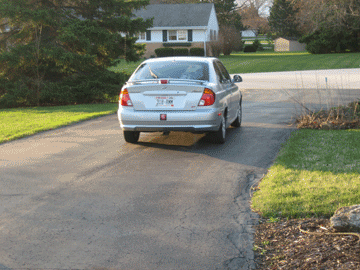
Sunday, rolling out the driveway in
Brookfield, Wisconsin; 1500 miles to go.
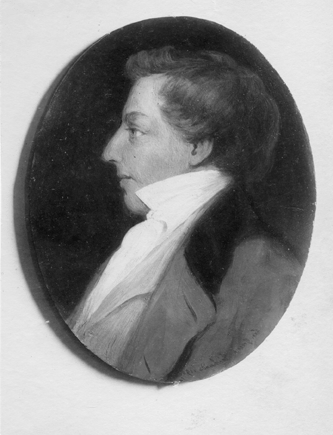
Joseph Smith.
(Courtesy Utah History Research Center.)
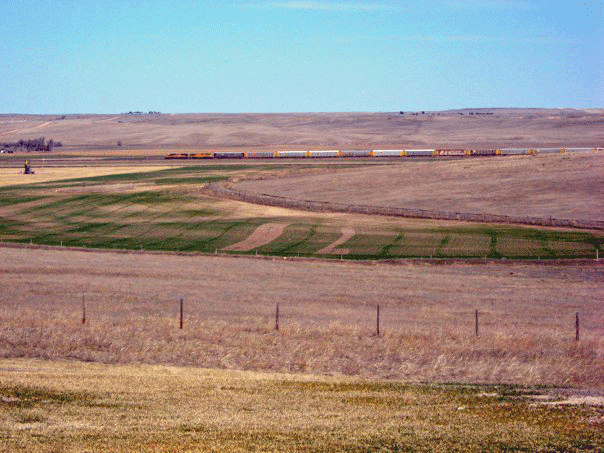
Nebraska train, Monday.
Click for larger view.
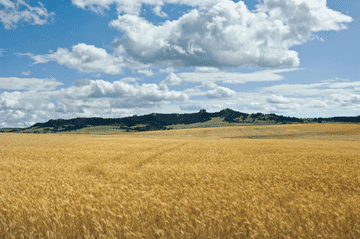
Nebraska vista.
(Courtesy Nebraska Department of Economic Development.)
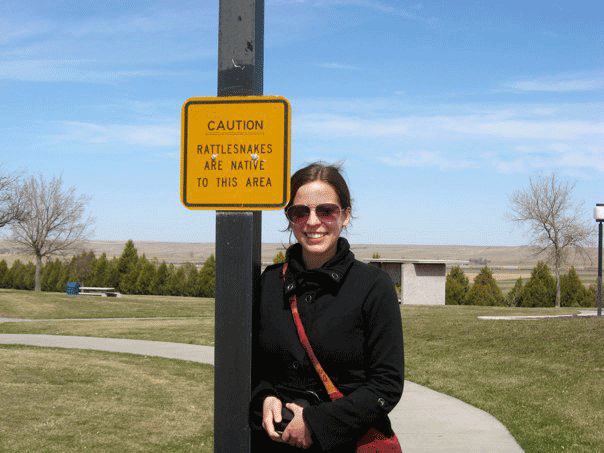
Ann warned about rattlers.
Click for another view.
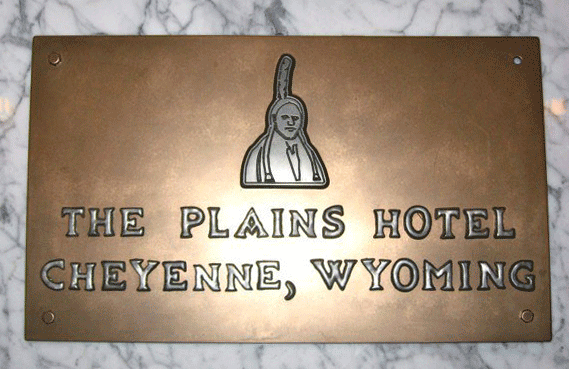
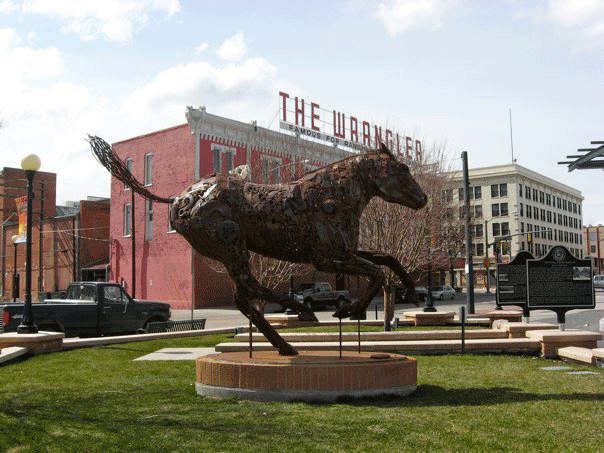
Downtown Cheyenne, Monday.
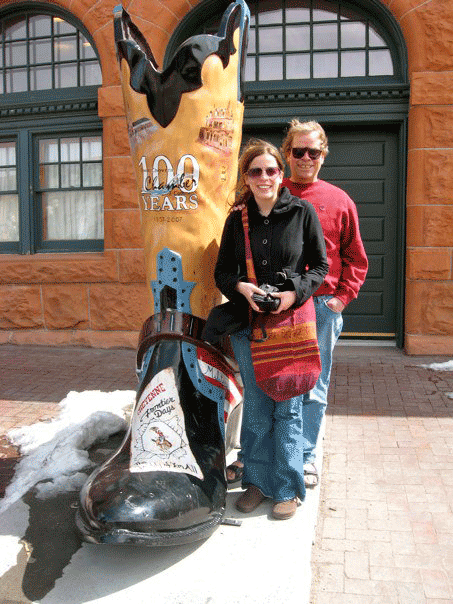
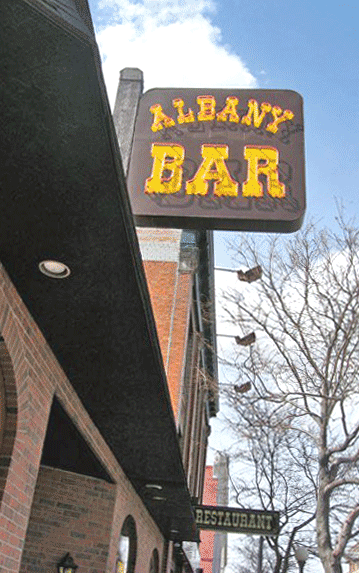
Cheyenne watering hole.
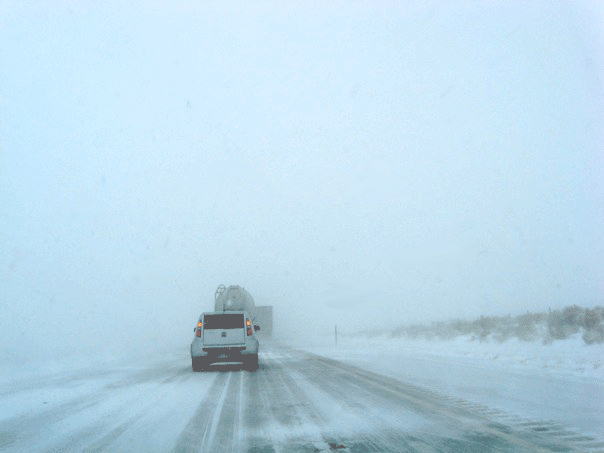 .
. I-80 west of Cheyenne, Tuesday.
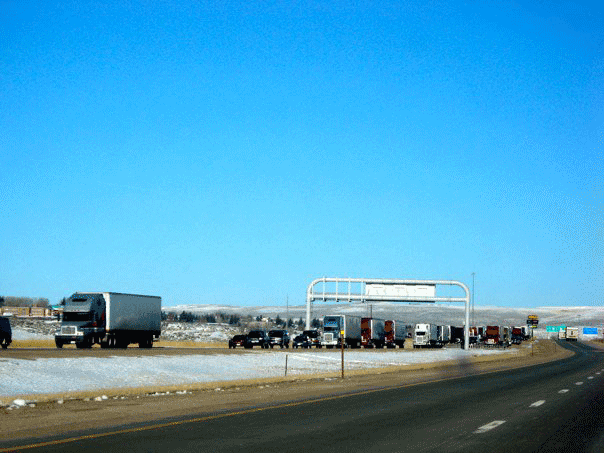
Roadblock east of Evanston, Wyoming,
Wednesday morning.
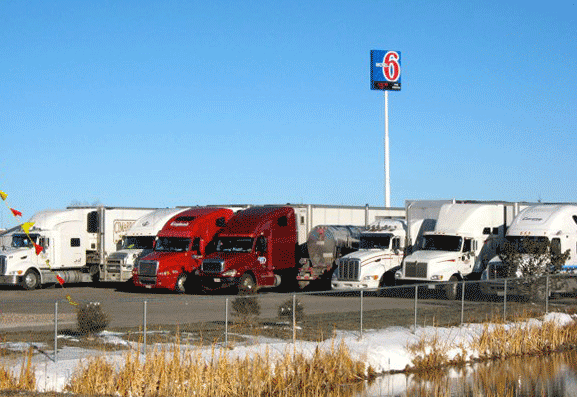
Evanston.
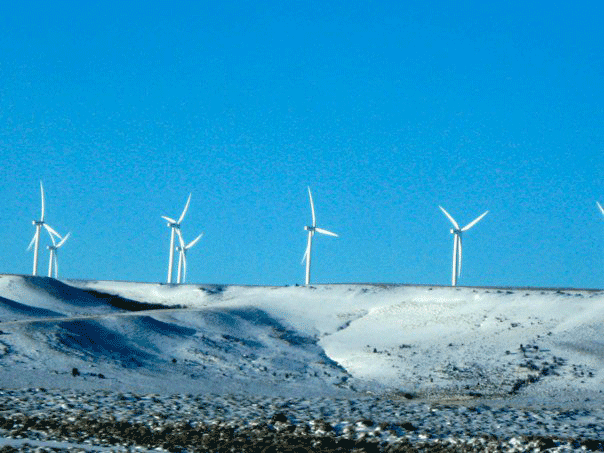
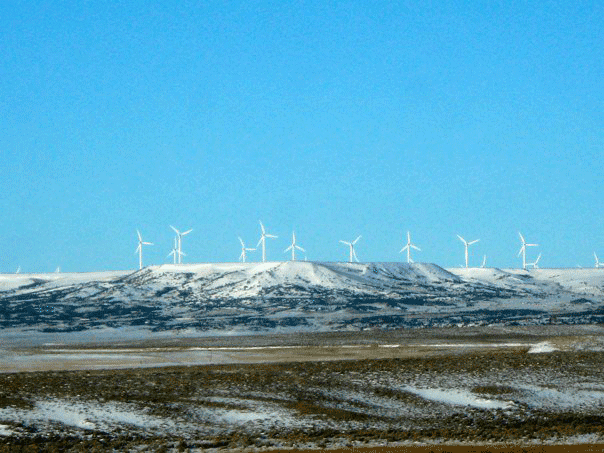
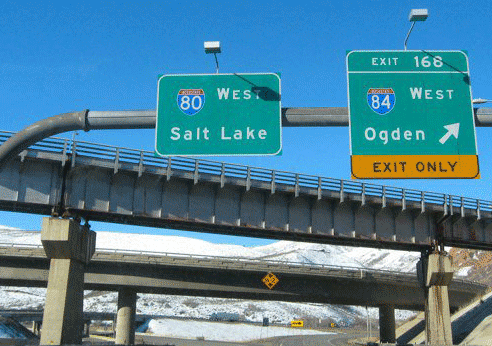
Final leg, Wednesday.
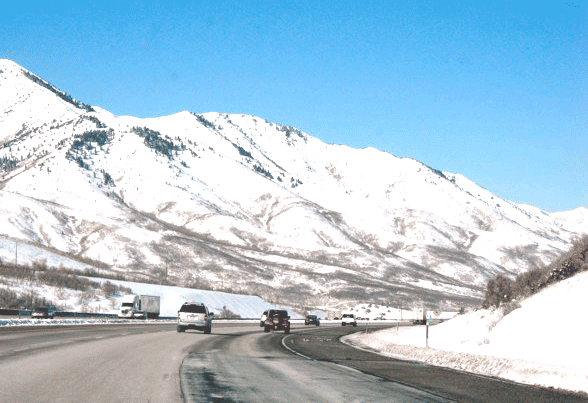
Descent into Salt Lake City.
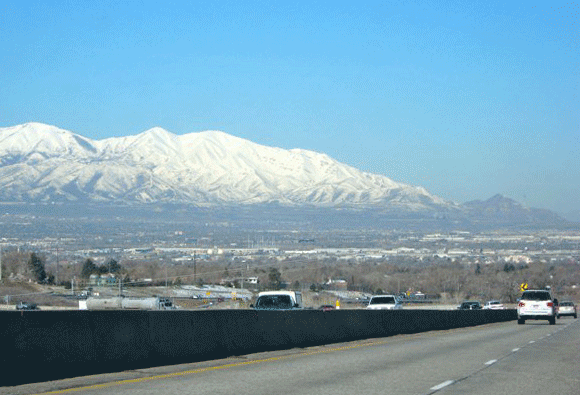
Salt Lake City is in a high basin.
Click for larger view.
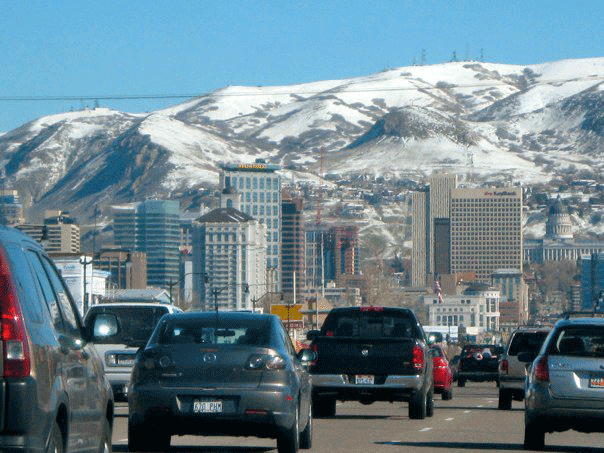
Downtown Salt Lake City.
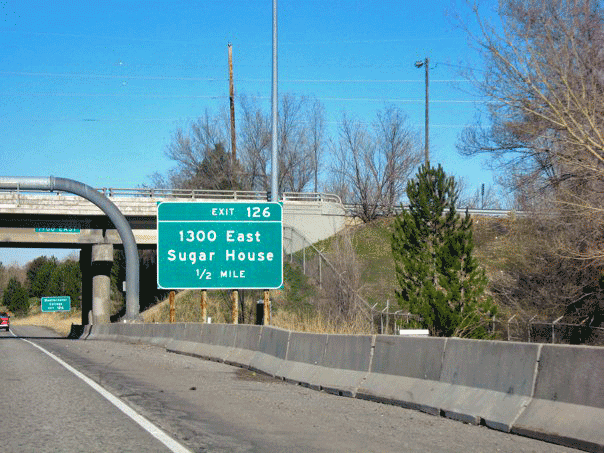
Arriving at Sugar House.
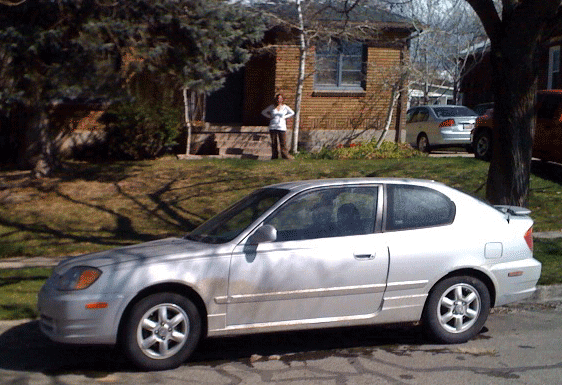
Ann's new pad.
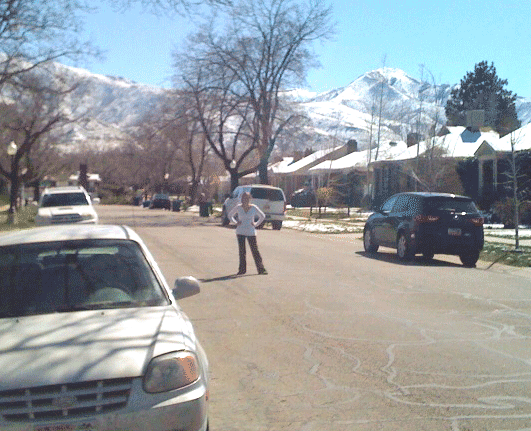
Mountains all around.
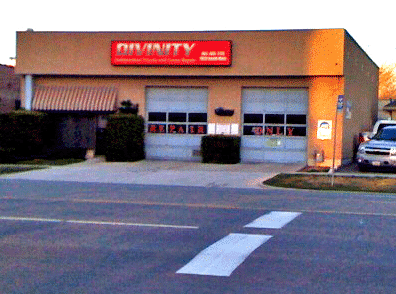
Divinity motors on Main Street.
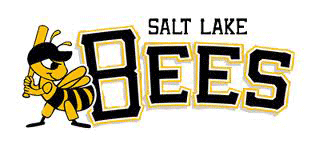
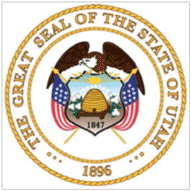

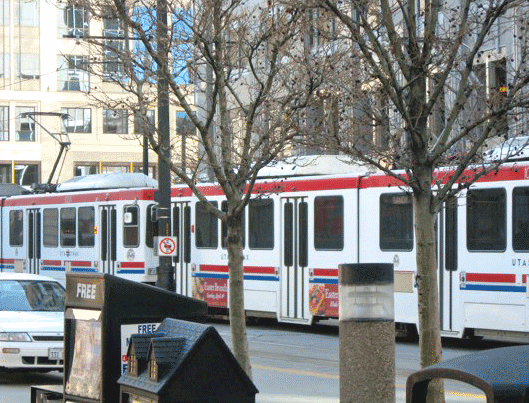
Trax cars, Thursday.
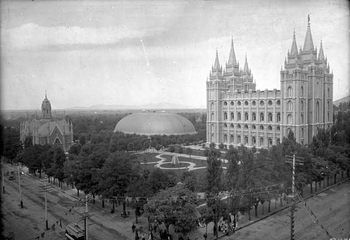
Temple Square circa 1897 (public domain).
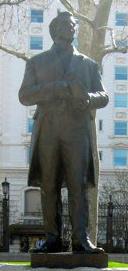
Joseph Smith on Temple Square.
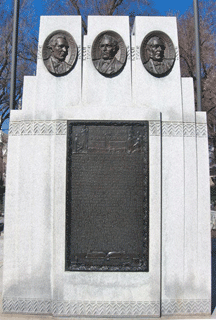
Three Witnesses plaque on Temple Square.
(Oliver Cowdery, David Whitmer, and Martin Harris who
claimed to have seen Smith's golden plates.)
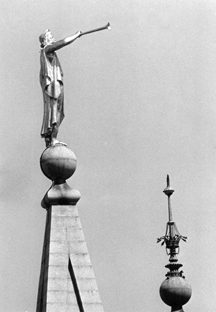
Angel Moroni atop Mormon Temple.
(Courtesy Utah History Research Center.)
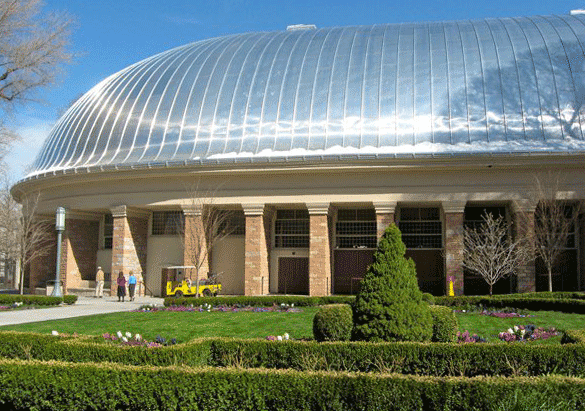
Mormon Tabernacle.
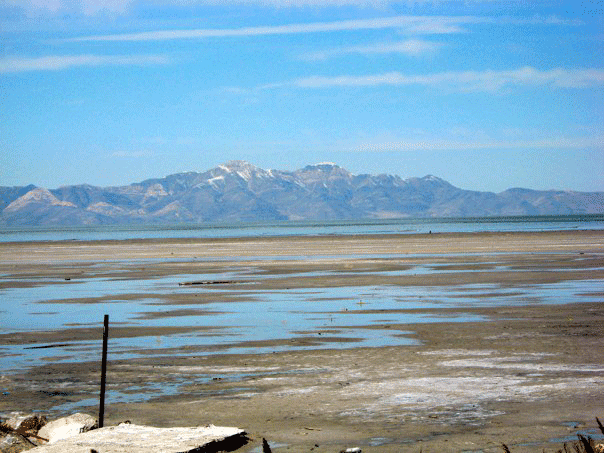
Great Salt Lake.
Click for larger view.
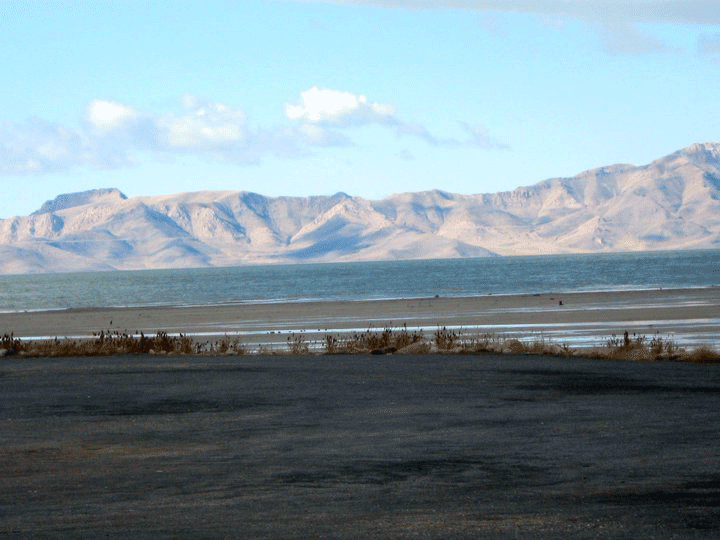
Great Salt Lake.
Click for larger view.
Return to
www.tswrites.com.
Mormon.
2 http://www.signaturebookslibrary.org/essays/bookofmormon.htm
3 http://eom.byu.edu/index.php/Native_Americans
4 http://scriptures.lds.org/en/bm/introduction
5 http://eom.byu.edu/index.php/Native_Americans6 http://en.wikipedia.org/wiki/Encyclopedia_of_Mormonism
7 No Man Knows My History Fawn M. Brodie page 126.
8
http://en.wikipedia.org/wiki/Fawn_M._Brodie
9 Under
the Banner of Heaven
page 70.
10 http://www.salamandersociety.com/marktwain/
11 An Insider's View of Mormon Origins Grant H. Palmer. Signature Books Salt Lake City 2002 Page 259.12 http://lds.org/ldsorg/v/index.jsp?hideNav=1&locale=0&sourceId=6da61f4b23fae010V
nVCM100000176f620a____&vgnextoid=2354fccf2b7db010VgnVCM1000004d82620aRCRD13 http://www.fortunecity.com/emachines/e11/86/secret.html
14 Under the Banner of Heaven page 122.
15 Ibid. Pages 119 and 120.
16 http://mormonopia.com/2009/04/04/179th-annual-general-conference-saturday-afternoon-session/
17 http://www.theplainshotel.com/pressreleases/factsheet.html
18 http://www.city-data.com/city/Cheyenne-Wyoming.html
19 http://www.slcgov.com/info/area_info/faq_new.htm Salt Lake City Web site
20 http://en.wikipedia.org/wiki/Sugar_House,_Salt_Lake_City
21 http://www.lightplanet.com/mormons/book_of_mormon/deseret.html
22 http://www.mormonwiki.com/Westward_Migration
23 http://www.colonialsense.com/How-To_Guides/Outdoors/Bee_Skep.php
24 http://www.desbio.com/dental.html
25 http://mormonscholarstestify.org/428/kevin-l-barney
26 http://bycommonconsent.com/2006/11/03/bcc-papers-1-2-barney/
27 http://en.wikipedia.org/wiki/UTA_TRAX
28 http://en.wikipedia.org/wiki/Quartz_monzonite
29 http://www.ldschurchtemples.com/saltlake/
30 Ibid.
31 http://lds.org/ldsorg/v/index.jsp?hideNav=1&locale=0&sourceId=
5b3f6a4430c0c010VgnVCM1000004d82620a____&vgnextoid=2354fccf
2b7db010VgnVCM1000004d82620aRCRD
32 http://en.wikipedia.org/wiki/Salt_Lake_Tabernacle
33 http://en.wikipedia.org/wiki/Mormon_Tabernacle_Choir
34 http://en.wikipedia.org/wiki/Black_people_and_the_Latter_Day_Saint_movement
35 http://www.exmormon.org/mormwomn.htm
36 Mormon Doctrine, Bruce R. McConkie,
Bookcraft Salt Lake City, 1966,
32 Printing 1987, page 527.
different-jesus
38 http://www.mormondoctrine.net/articles/God_became_God.htm
39 http://www.kennecott.com/visitors-center/take-a-virtual-tour/?id=2531
40 Ibid.
41 http://www.mormon.org/missionaries?gclid=COL6i_zv46QCFegB5wodFFctLA
42 No Man Knows My History Fawn M. Brodie pages 340-341.